Eight Must-Visit Croatian Castles, Fortress, and Citadels
June 23, 2022 - In this small guide to Croatian castles, fortresses, and citadels you will find some of the many walled wonders that you can explore in the country, to add a bit of history to your vacation.
It is well known why Croatia is one of the countries where HBO producers set their sights on adapting the acclaimed and popular Game of Thrones novel. Although Croatia is widely known for its Illyrian and Roman heritage thanks to its palaces and amphitheater, many of its castles and fortresses help to display a more medieval side of the country.
For those who have a particular interest in the feudal and medieval history of Croatia, here we review some of the main Croatian castles, fortresses, and citadels that are worth visiting.
Pula Castle
The Pula Castle is a star-shaped castle with four bastions that was built in 1630 to protect the city and its harbor because of its great significance in maritime trade in the North Adriatic. The Venetians commissioned the building of the Castle to the French military architect Antoine de Ville. This was most probably the site of an earlier fortress dating from the pre-Roman and Roman periods. Today the Castle houses the Historical Museum of Istria.
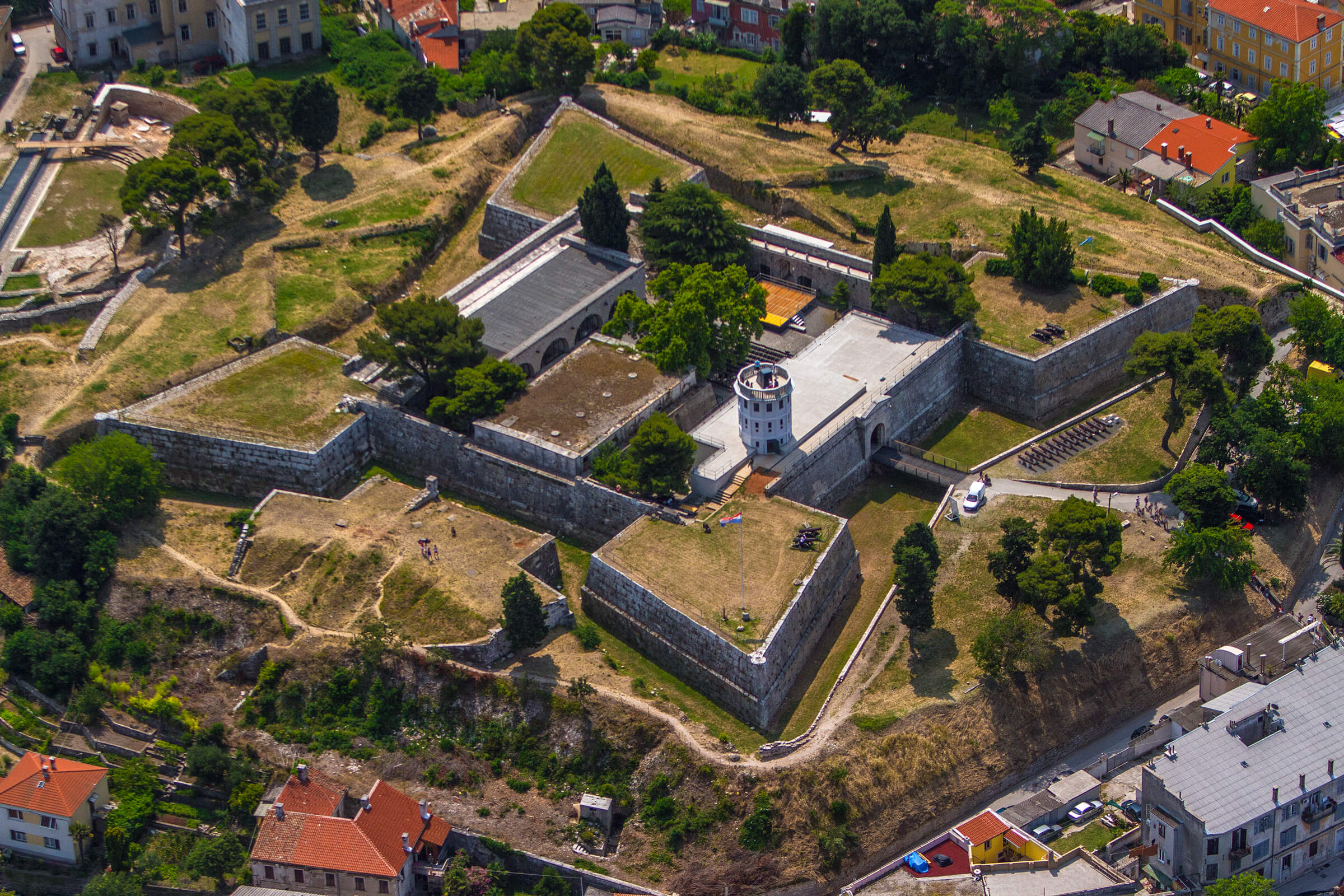
Image: Pula Tourist Board
Trsat Castle
The Trsat Castle served as a lookout on a hill 138 meters above sea level, now overlooking the city of Rijeka. It was mentioned as a parochial center for the first time in 1288. At this same site, there was a Liburnian observation post from prehistoric times, used for monitoring the roads leading from the hinterland to the coast. This location served well for the Romans to establish their defense system, the so-called Liburnian limes, whose starting point was the Tarsatica fortress town, located now in Rijeka's Old Town.
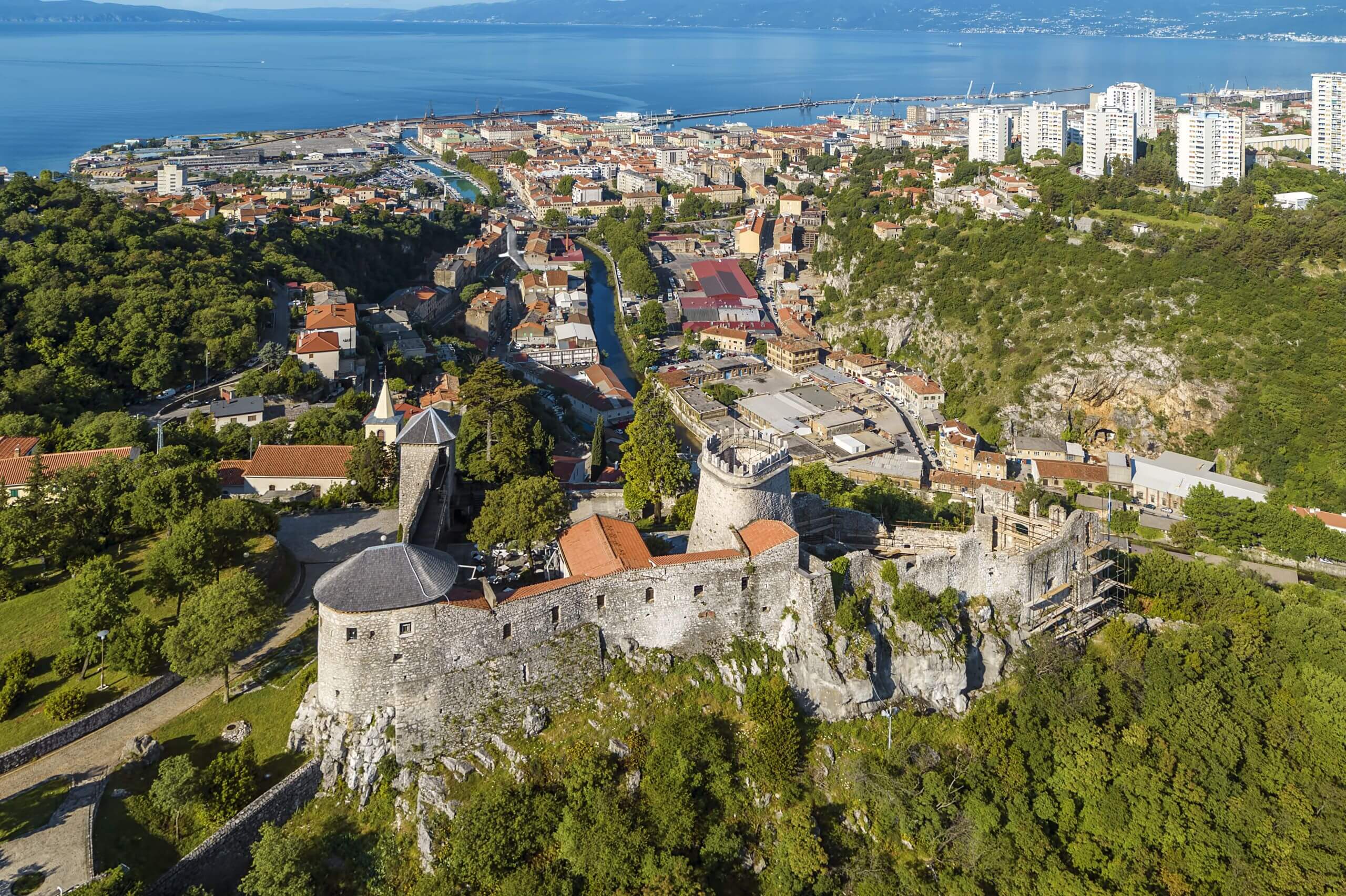
Image: Rijeka Tourist Board
Dubovac Castle in Karlovac
The Dubovac castle is one of the best-preserved and most beautiful monuments of feudal architecture in Croatia. It was built on a hill above the Kupa river and was named after an oak that grows on the surrounding slopes. It changed owners throughout history, changing its appearance depending on current needs and fashion, and got its present appearance after a complete reconstruction in the mid-20th century. It is not known exactly when did construction begin, but books say that it was finished during the 13th century.
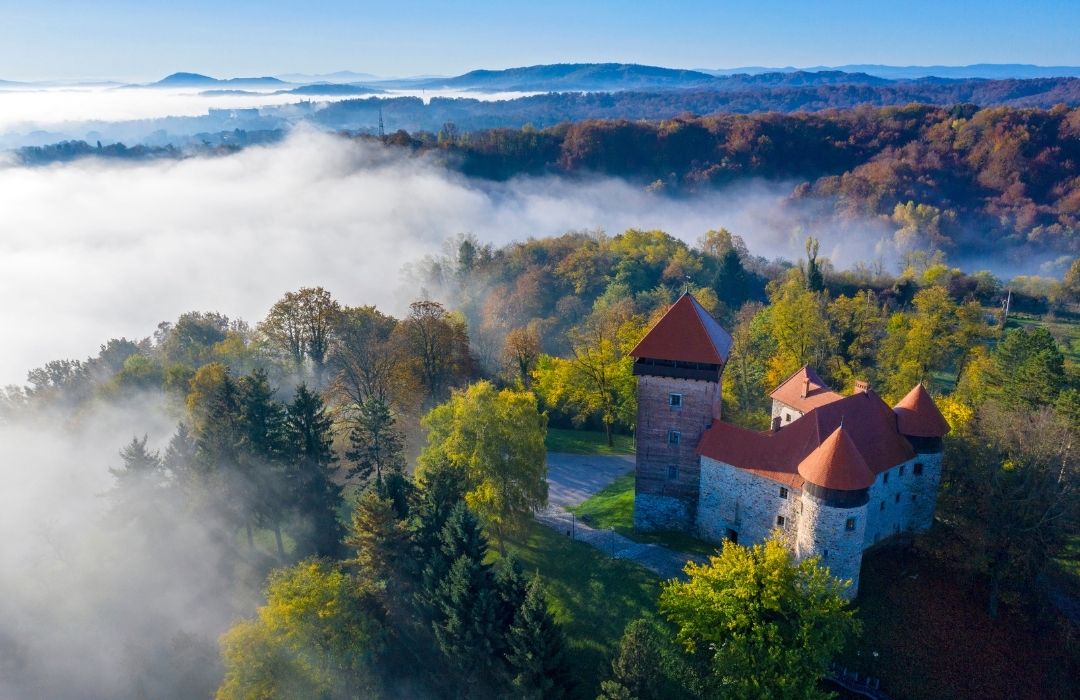
Image: Karlovac Tourist Board
Trakošćan Castle
The Trakošćan castle was built at the end of the 13th century in the defense system of northwestern Croatia as a small observation post to monitor the road from Ptuj to the Bednjan valley. According to the legends, the Trakošćan castle got its name from the Thracian fortress, which allegedly existed in ancient times. Another surviving tradition says that it was named after the Drachenstein knights who ruled the area in the early Middle Ages. A museum with a permanent exhibition was founded in 1954.
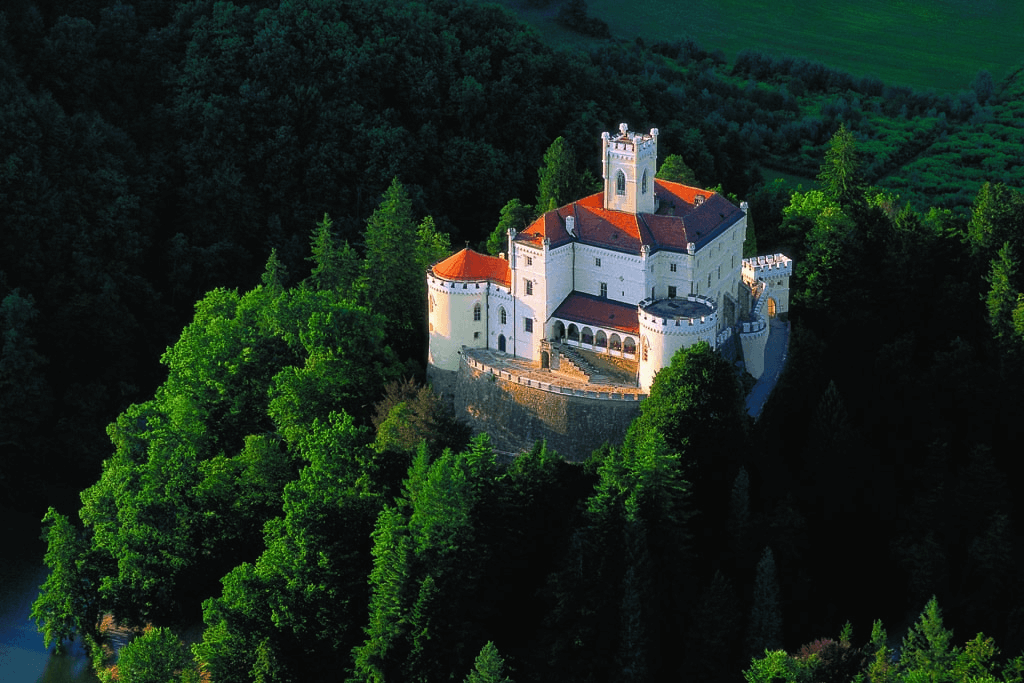
Image: Trakošćan
Varaždin's Old Town
Varaždin’s feudal fortress, known from ancient times as the Old Town, is undoubtedly the most significant historical building in the city. Unlike the royal free city that grew next to and around it, the fort was the heart of the noble estate, which was separate in terms of ownership and law. Disputes between its inhabitants with the citizens of Varaždin were frequent. The fort was built intermittently from the 14th to the 19th century, and its oldest part is the central tower adorned with Gothic benches and canopies, which is a rarity for this type of medieval plastic art in north Croatia.
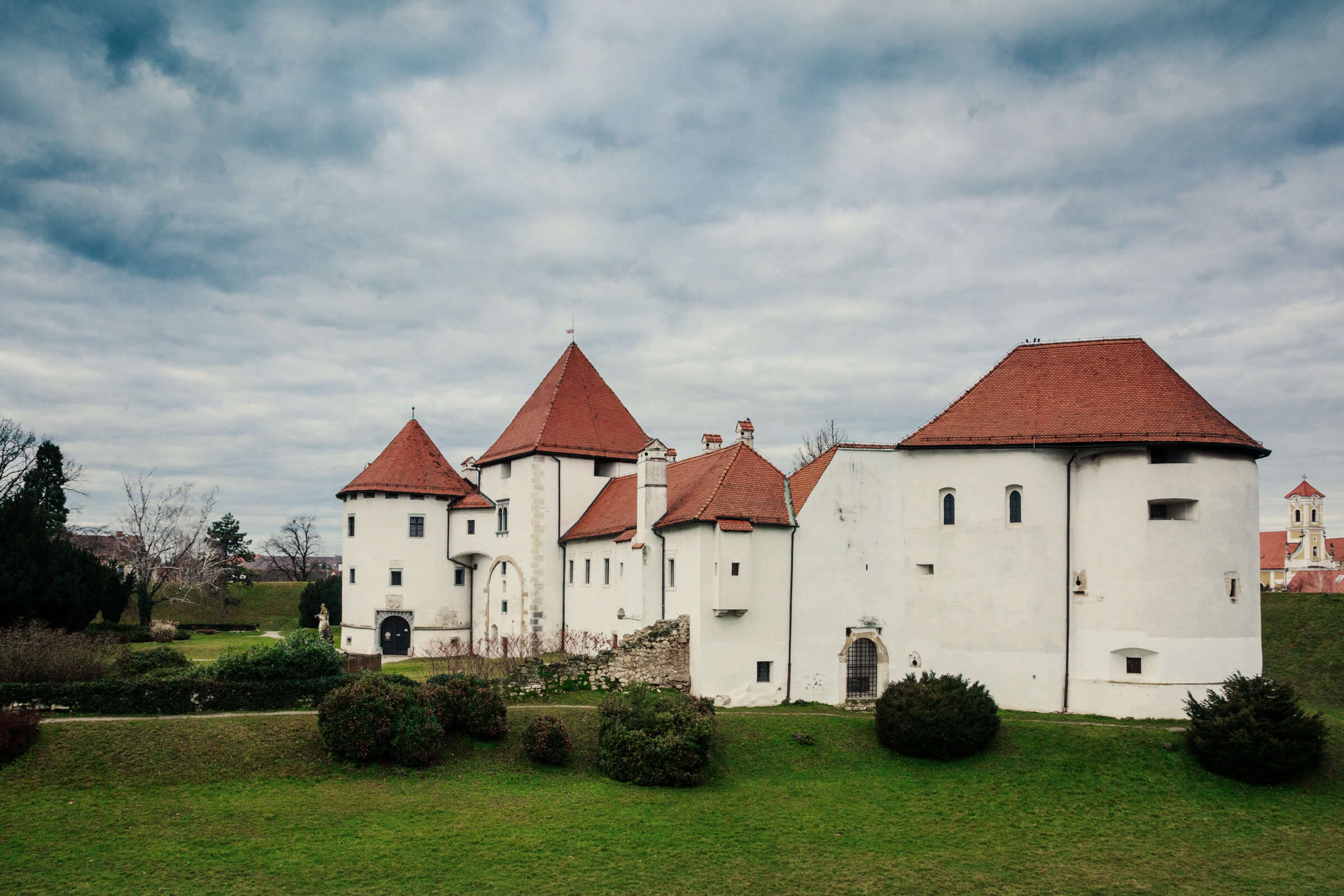
Photo: Mario Romulić
Medvedgrad in Zagreb
At the top of Medvednica, this picturesque medieval castle has been watching over Zagreb for eight centuries. It was built in 1254, after the catastrophic invasion of Tatars who had raided and devastated this area, burning and razing to the ground the two settlements which later became the city of Zagreb: the burgher’s Gradec and the bishop’s Kaptol. Even though magnificently fortified and always ready for battle, Medvedgrad was never attacked. In 2021, Medvedgrad was reopened to the public with a modern and interactive museum inside.
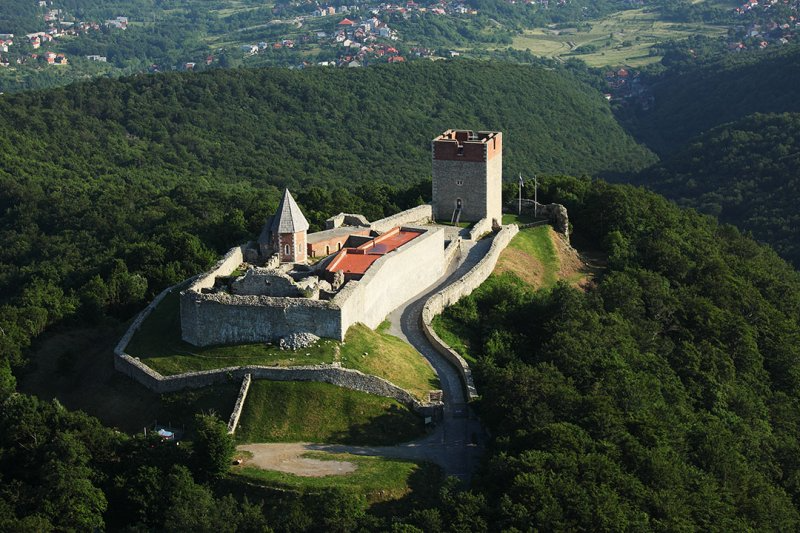
Image: Zagreb Tourist Board
St. Nicholas Fortress in Šibenik
The fortress of St. Nicholas, located at the entrance to the Channel of St. Ante in Šibenik, is a unique Venetian fortification. It was built on the island of Ljuljevac, on the site of the former Benedictine monastery of St. Nicholas, after whom it was named. The construction of the fortress, according to the project of the Venetian architect Gian Girolamo Sanmichelli, began in 1540 after the fall of the city of Skradin under Ottoman rule, when the Venetians had to strengthen the defense of Šibenik, its most important strategic port on the eastern Adriatic coast.

Image: Šibenik Tourist Board
Klis Fortress
Klis fortress was built on an extraordinary strategic location separating the mountains of Mosor and Kozjak that allowed military and commercial control over the whole Klis valley and the area of Salona and Split. Because of its importance, Klis was often referred to as the key to Dalmatia and the heart of the medieval Croatian kingdom. It was built as a small stronghold by the Illyrian tribe Dalmatae, then became a royal castle during feudal and medieval times, and lastly served as a major source of defense against the Ottoman advance.
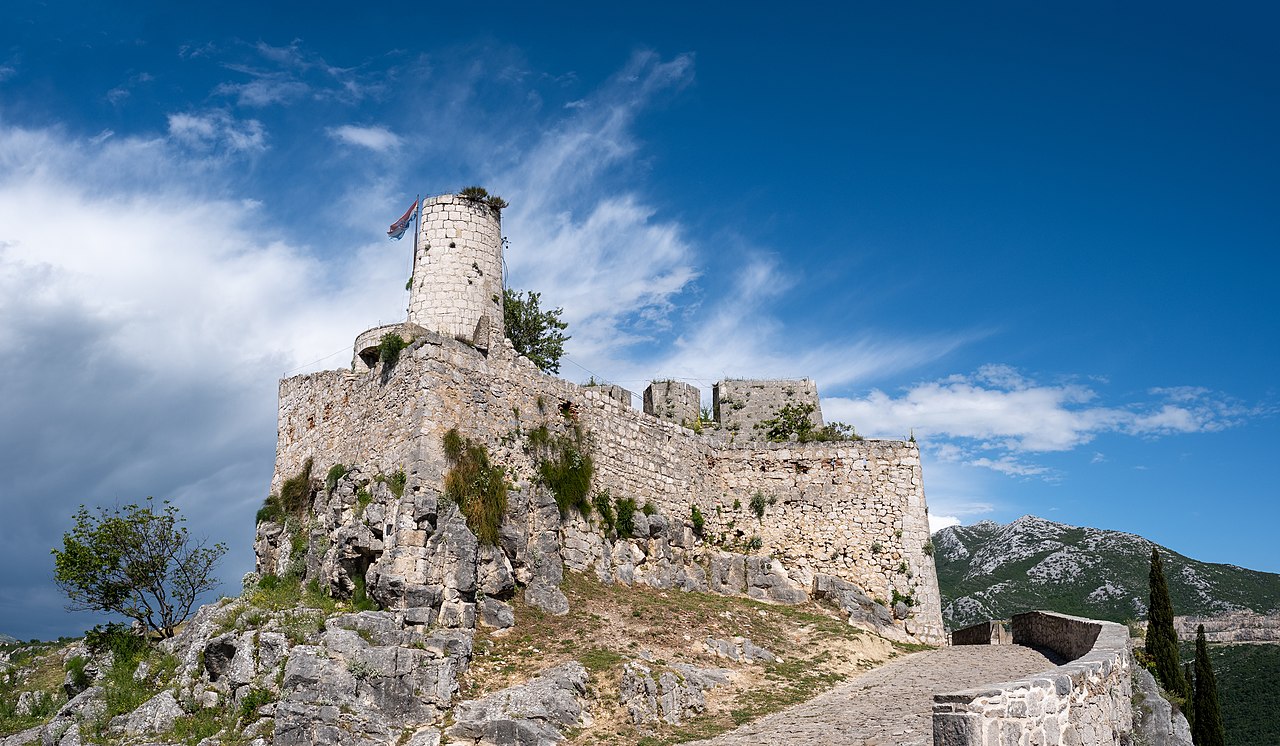
Image: Jules Verne Times Two/Wikimedia Commons
For more on travel in Croatia, follow TCN's dedicated page.
The Reason Behind the Slow Revitalization of Šibenik Old Town
April 19, 2022 - Šibenik Old Town, once hailed the most beautiful on the Croatian Adriatic coast by the former director of the Croatian National Tourist Board Niko Bulić, today faces a complicated reality with many buildings on the verge of danger and numerous lawsuits in order to restore them. The reason? Abandonment by their own owners.
''Don't talk about it in the press, because of my function and Dubrovnik origin, but my impression is that Šibenik's old town is the most beautiful on the Croatian Adriatic coast. And I think that Krešimir's city will experience a real tourist boom when the right way to value that part of Šibenik begins. I am especially fascinated by the combination of Gorica and Doc at the foot of the fortress of St. Michael.'', told the then director of the Croatian Tourist Board, Mr. Niko Bulić to Slobodna Dalmacija ten years ago in a pleasant walk through the streets, squares and thighs of Šibenik.
At that time, Šibenik already had great momentum in the reconstruction of its four fascinating fortresses, which have always defended the city from the sea and land, for which, according to objective observers, the Society for the Preservation of Šibenik Heritage "Juraj Dalmatinac" is especially responsible, reports Slobdona Dalmacija. Hence the interesting explanation of the director of the hotel complex Amadriapark for a high donation (90 thousand kuna) to the company:
''No, I don't think the donation is too high because we don't need to invest so much in the promotion of our hotels anymore. Our best advertisement is the decorated Šibenik Old Town, for which the company "Juraj Dalmatinac" is especially responsible.'', Goran Zrilić, director of Amadriapark, told SD three years ago.
The enthusiasm of ''Jurjevci''
Frequent praises did not diminish the enthusiasm of the "Jurjevci", as they are colloquially called in Šibenik. On the contrary, it seems that the restoration of some valuable details in the historical core of Šibenik has gained new momentum.
''In the last ten months, we have restored five details of the Šibenik Old Town architecture, and the sixth is in progress. We are talking about staircases, reliefs, vaults… Finally, we use our funds to -arrange the space for our activities, which were given to us by the city "government" as a sign of gratitude for our activity.'', said Nikola Grubić, president of "Juraj Dalmatinac".
The transfer of space to the mentioned society is only a part of the efforts that the city government is investing in the renovation of houses, or rather roofs and facades in the old town.
In the last tender for subsidizing the arrangement of (private) houses in the old town, the City of Šibenik offered more than 750 thousand grants. And not only that.
Unofficially, the people of Šibenik are at the forefront of the European consortium, which consists of six European cities, called the Kairos project, which facilitates the lives of residents in the old town.
''We are convinced that our project has a positive effect. Of course, with the help of other city factors.'', in unison are the head Petar Mišura and Ines Sarić, who in the Office of Economy directly take care of the project.
However, some residents of private buildings made sure that the considerable momentum in Šibenik did not go as smoothly as planned, who, just like passers-by in the city center, witnessed the collapse of their buildings, but did nothing. These are old buildings, which are beginning to pose a danger to walkers, and where external "interventions" are not enough to solve the problem.
They returned the facilities...
''It has become an extremely current city topic. At the same time, I am especially angry with those owners, to whom we returned the long-nationalized buildings, and who, obviously, do not move a finger about their renovation, let alone move in potential tenants. There are also buildings that have already turned into typical ruins. Without roofs, windows, or hung shutters, and whose owners "disappeared" as if those buildings had fallen into the ground'', Mayor Dr. Željko Burić told SD in an informal conversation.
The problem is not only in the negligence of the owners of old buildings. The problem is further exacerbated by the fact that Croatia, unlike some other Western European countries, does not have a law that, in such cases, would allow automatic urban "intervention". Therefore, only (private) lawsuits remain, which, as it were, have been dragging on in our courts for years.
Perhaps the most glaring examples are two particular neglected buildings on the city's busiest tourist route, across the stairs of St. Luca to the fortress of St. Michael. At the top of the stairs are two shamefully neglected buildings. For a tourist amazed by Šibenik Old Town, it is enough to look at their long-torn roofs, to turn his head to the other side, with disbelief that this is possible in a city which, as one of the last consultations said, "should be a model on how to value the city's heritage in parallel with tourism development".
For more, check out our politics section.
Touristic Valorisation of Saint Nicholas Fortress Boasts Huge Potential
As Morski writes on the 8th of December, 2019, the final conference of the project ''The touristic valorisation of Saint Nicholas Fortress in the Saint Ante Channel'' presents the results of the reconstruction of the fortress at the entrance to Šibenik.
The results of the project were presented by Prefect Goran Pauk, Director of the ''Nature'' Public Institution of Šibenik-Knin County, Anita Babačić Ajduk, Chief Designer of the Croatian Restoration Institute, Ana Škevin Mikulandra and Renata Tomljenović, research associate at the Zagreb Institute of Tourism.
''If we're using sports vocabulary, then we've reached the semifinals. We have come a long way, but the most important matches are still ahead of us. This project created all the documentation and preconditions for obtaining the funds for the complete and final reconstruction of Saint Nicholas Fortress. The next step is to include the project in the list of strategic projects of the Ministry of Culture of the Republic of Croatia,'' pointed out the Goran Pauk.
The activities and results of the Saint Nicholas Fortress project were presented by Anita Babačić Ajduk.
''First of all, thank you to the great collaborators for the project. We've obtained top quality documents that place emphasis on protection, conservation and sustainable use. This is in line with the principles of operation of our institution and the recommendations of UNESCO. Our concept and the guiding principle in the planning and implementation of projects so far and in the future is the integral sustainable management of natural and cultural heritage. These documents are not only a tool for obtaining new cash from EU funds, but also a guarantee that at the end of the process we'll receive the originally restored fortress in its full glory,'' Ajduk stated.
The main and detailed design of the fortification and renovation was presented by Ana Škevin Mikulandra, Chief Designer of the Croatian Restoration Institute:
''The project provided a solution for the rehabilitation of the dilapidated and damaged building structures of the fort. The conservation and restoration works, the construction rehabilitation and the furnishing are included. The design approach is based on conservation principles with the aim of preserving its monumental integrity and the value, with reversible contemporary interventions, all in order to contribute to the creation of new value and to position the fortress in accordance with global importance.
The Saint Nicholas Fortress' management plan was presented by a research associate of the Institute of Tourism, Renata Tomljenović:
''The plan is an instrument for the sustainable management of the fort and its contact zone. This includes protection, sustainable use, management and visitation, and funding, education and collaboration. The goal is to make the fortress world renowned for its impressive architecture in a unique natural environment, but above all to preserve its authenticity, manage it sustainably, for the benefit of citizens, visitors and future generations,'' she stated.
The project is co-financed by the European Union from the European Regional Development Fund under the Competitiveness and Cohesion Operational Program.
Make sure to follow our dedicated lifestyle page for much more.
St. Nicholas Fortress in Šibenik to Open for Visitors After Two Years
The city of Šibenik is one of the few towns in the world with two cultural monuments listed on UNESCO's cultural heritage list - the St. James Cathedral and the St. Nicholas Fortress, reports HRTurizam on June 1, 2019.
The St. Nicholas Fortress will again welcome visitors from June 15, after nearly two years of being closed to the public.
During this off period, construction works were carried out to clean the building, with necessary restoration and measures for the safety of visitors. The boat dock at the main entrance was restored and provided secure and organized access to the site. These were the necessary preconditions for reopening of the fort, though the real job of its restoration lies ahead.
"Our ultimate goal is to completely revitalize, decorate and renew the St. Nicholas Fortress, which will be open to visitors during the season. This requires tremendous efforts, painstaking work, and continued efforts in securing financial resources. But once we complete this lifelong project, we will leave a restored, originally preserved and magnificent UNESCO monument for future generations whereby the city of Šibenik and Šibenik-Knin County will be recognizable throughout the world,” said Goran Pauk, Prefect of Šibenik-Knin County.
Opening the St. Nicholas Fortress in the St. Anthony Channel is the result of a series of projects funded by the European Union, the Šibenik-Knin County and the Ministry of Culture of the Government of the Republic of Croatia. The first significant step was made in 2013 when, through the valorization project of the St. Anthony Channel, they organized the promenade and access road to the fortress. In May last year, the second phase of this project was contracted, which saw a value of 26 million kuna, and which envisions a visitor center and supporting infrastructure. In cooperation with the Ministry of Culture and the Conservation Department in Šibenik, a great deal was done, which resulted in a spot on the UNESCO World Heritage list. After that, an additional 2.6 million kuna was provided for the project documentation to complete the reconstruction of the facility, and the State Property Ministry allocated the area of the former barracks in the Minerska cove for 50 years.
“We are happy that the fortress, which has a special significance for all of us, will open its doors. I thank our fellow citizens who have recognized the complexity of the project and have shown great patience all this time. I can now be pleased to announce that during the first working day we will provide free tickets for all visitors and from June 17 to June 25, we will provide free tickets for half of the capacity of the ships for the inhabitants of Šibenik-Knin County to get acquainted with the offer but also experience the fortress in a whole new way. Also, I would like to thank the Ministry of Culture, the Conservation Department in Sibenik, the employees of Šibenik-Knin County and everyone who helped open the doors of this proud guard of Šibenik,” said Anita Babačić Ajduk, Director of the Public Institution of Nature in Šibenik-Knin County, which manages the fortress.
This season, you can visit the fortress only by the official boats departing from Šibenik.
A two-hour visit will include an attractive boat ride through the Šibenik channel and tour of the fort, accompanied by expert staff and the use of a multimedia guide. The maximum daily visit capacity is limited due to the limited number of places on board, the security conditions, and the protection of the monuments, as well as the quality of the visitors' experience.
Tickets will be available at a sales outlet on the Šibenik Riva and online.
To read more about travel in Croatia, follow TCN’s dedicated page.
UNESCO Flag Displayed on St Nicholas Fortress in Šibenik
It's official - the priceless monument in Šibenik now proudly flies the UNESCO flag!


